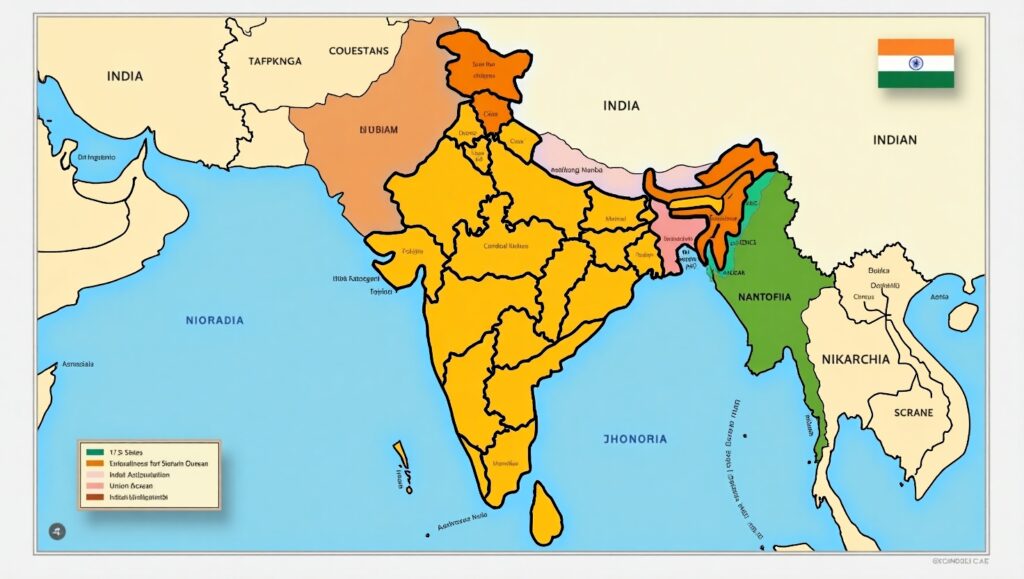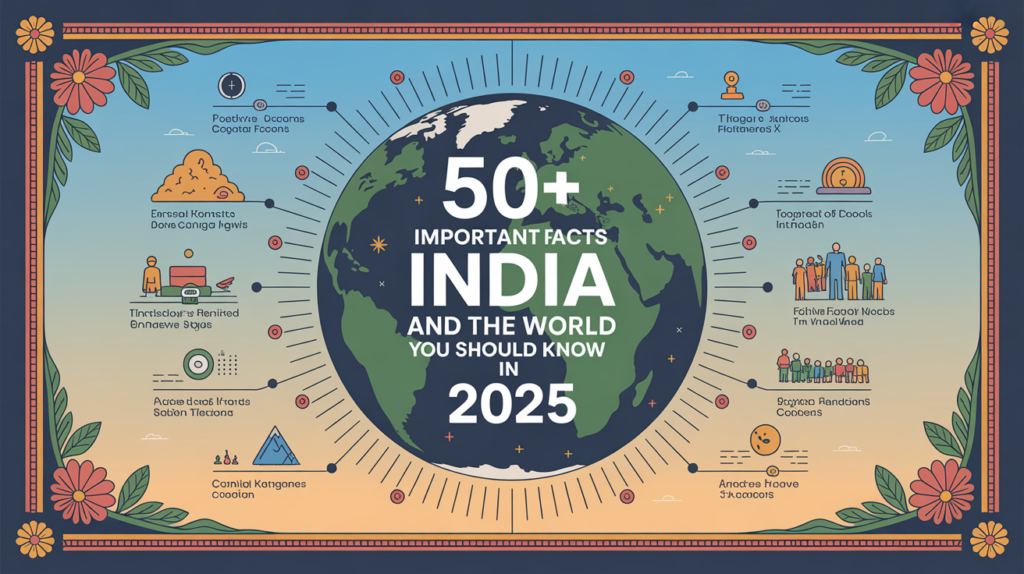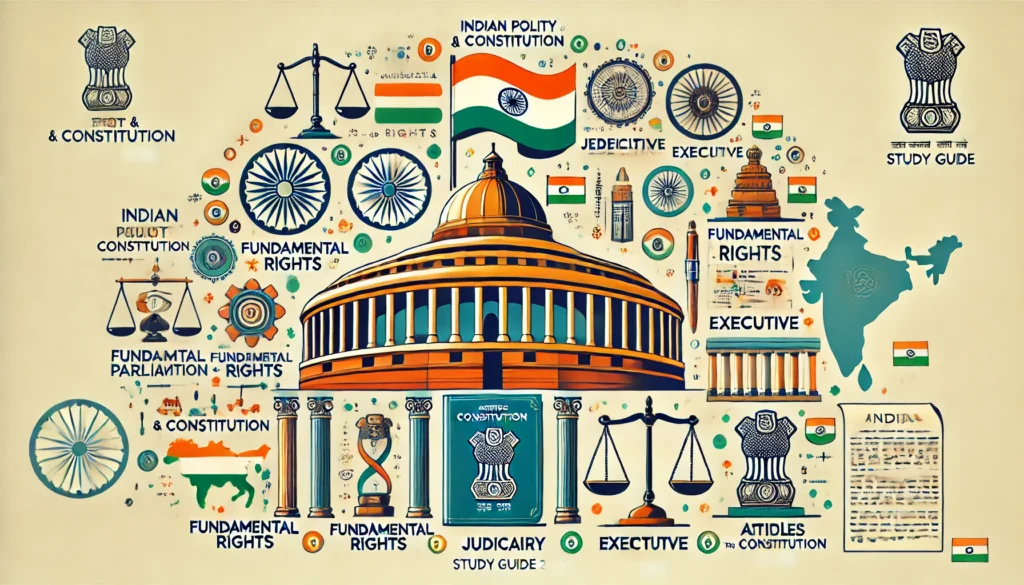Indian Geography: A Complete Guide to India’s Physical and Political Landscape (2025)
A Complete Guide to Indian Geography: Physical, Political & Climatic Features India is a land of breathtaking diversity—geographically, culturally, and climatically. Located in South Asia, India is the 7th largest country in the world by area and the most populous nation as of 2025. From the towering Himalayas in the north to the vast coastline in the south, Indian geography plays a crucial role in shaping the country’s economy, biodiversity, and daily life. In this blog, we will explore the complete geography of India including physical features, rivers, states, climate zones, and more. If you’re a student, a UPSC/SSC aspirant, or a curious reader, this is your go-to resource for Indian Geography. 🗺️ 1. Location and Boundaries India lies entirely in the Northern Hemisphere between: Latitudes: 8°4’N to 37°6’N Longitudes: 68°7’E to 97°25’E Neighbors: India shares borders with: Pakistan (NW), China and Nepal (North), Bhutan (NE), Bangladesh and Myanmar (East) Maritime borders with Sri Lanka, Maldives, and Indonesia Coastline: Approximately 7,516 km (includes mainland and island territories) ⛰️ 2. Major Physical Divisions of India Indian Geography can be broadly divided into six physical regions: 🔹 a. The Northern Mountains The Himalayas: World’s highest mountain range Divided into: Greater Himalayas (Himadri) – Mount Everest (shared with Nepal) Lesser Himalayas (Himachal) – Famous hill stations like Shimla and Manali Shiwalik Hills – Outermost range 🔹 b. The Northern Plains Formed by alluvial deposits from the Ganga, Brahmaputra, and Indus rivers Extremely fertile, agriculturally rich Densely populated (Uttar Pradesh, Bihar, West Bengal) 🔹 c. The Peninsular Plateau Comprises the Deccan Plateau, Chotanagpur Plateau, and Malwa Plateau Rich in minerals and forests Divided by the Vindhya and Satpura ranges 🔹 d. The Indian Desert Thar Desert in Rajasthan Arid climate, sand dunes, and sparse vegetation Major cities: Jaisalmer, Bikaner 🔹 e. The Coastal Plains Eastern Coastal Plain (Coromandel Coast) Western Coastal Plain (Konkan and Malabar Coast) Fertile deltas: Godavari, Krishna, Kaveri 🔹 f. The Islands Andaman & Nicobar Islands (Bay of Bengal) Lakshadweep Islands (Arabian Sea) 🏞️ 3. Major Rivers of India India is blessed with a vast river system, categorized into: Himalayan Rivers Ganga – Longest river in India Yamuna, Brahmaputra, Indus (now mostly in Pakistan) Peninsular Rivers Godavari – “Dakshin Ganga” Krishna, Kaveri, Narmada, Tapi, Mahanadi River systems are crucial for irrigation, drinking water, hydroelectricity, and transportation. 🧭 4. Indian States & Union Territories India is divided into: 28 States 8 Union Territories Each state has its own capital, cultural identity, and often its own language. Key states in terms of geography: Rajasthan – Largest by area Goa – Smallest by area Uttar Pradesh – Most populous Sikkim – Least populous ☁️ 5. Climate Zones of India Indian geography contributes to a diverse climate, from snowy winters in the north to tropical heat in the south. Major Climate Types: Tropical Wet (Kerala, coastal regions) Tropical Dry (Rajasthan) Temperate (Himalayan states) Mountain Climate (Ladakh, Himachal) Seasons in India: Winter: December to February Summer: March to May Monsoon: June to September Post-monsoon/Autumn: October & November 🌿 6. Natural Vegetation and Wildlife India is home to: Tropical Rainforests (Western Ghats, Northeast India) Deciduous Forests (Central India) Thorny Scrublands (Rajasthan) Alpine Forests (Himalayan region) Famous national parks: Jim Corbett, Sundarbans, Kaziranga, Ranthambore, Gir 🏗️ 7. Economic & Strategic Importance Agriculture thrives in fertile plains and river valleys Industries are based near plateaus and mineral belts Ports on both coasts: Mumbai, Chennai, Kolkata, Kochi Strategic defense via Himalayas and coastal surveillance 🧠 Why Study Indian Geography? Understanding Indian geography is vital for: Competitive exams (UPSC, SSC, Banking, etc.) Career in civil services, teaching, or journalism Better understanding of natural disasters, climate change, and regional planning General knowledge enhancement ✅ Conclusion The geography of India is vast and fascinating, filled with contrasts in terrain, culture, and climate. From the snow-capped Himalayas to the sun-kissed beaches of Kerala, India’s physical diversity is matched by its cultural richness. Whether you’re preparing for an exam or just love learning, mastering Indian geography will deepen your understanding of one of the most vibrant nations on Earth.










